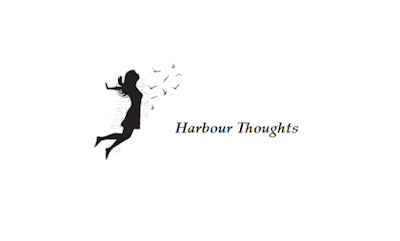Revolution
By Agam Wispi
I entice you into the woods, my love
and you follow me like a shadow
the shore vanishes, the sea remains
and corpses pile up in the disputed city
red ribbon and sun
love bleeds on until death.
Source: Contemporary Progressive Indonesian Poetry, 1962
Poem Analysis:
Agam Wispi’s poem Revolution presents a haunting exploration of love interwoven with the themes of conflict, loss, and transformation. Through evocative imagery and a compact structure, the poem captures the duality of romantic intimacy and the harsh realities of societal upheaval. The interplay between personal and political elements underscores the emotional complexity of a revolution that transcends mere physical conflict.
The Invitation to Escape
The opening lines of the poem—“I entice you into the woods, my love / and you follow me like a shadow”— establish a sense of intimacy and allure. The speaker’s invitation suggests a desire to escape the confines of a troubled world, as the woods represent both a physical space of retreat and a metaphorical realm where personal connections can flourish. The phrase “you follow me like a shadow” indicates an inherent closeness and dependence, suggesting a relationship characterized by loyalty and attachment.
However, the woods also evoke a sense of danger and uncertainty. By leading the reader into a natural setting, Wispi juxtaposes the tranquility of love with the violence that lies beyond. This duality hints at the complexities of romantic relationships in times of societal unrest, suggesting that love can be both a refuge and a source of vulnerability.
Contrasting Landscapes: Shore and Sea
The lines “the shore vanishes, the sea remains” introduce a stark contrast between stability and chaos. The shore, symbolizing safety and the familiar, disappears, leaving only the tumultuous sea. This imagery suggests a disintegration of the known world, where the speaker's safe haven is consumed by the unpredictable forces of nature and conflict. The sea, often associated with depth and unpredictability, reflects the emotional turmoil that accompanies both love and revolution.
Moreover, the vanishing shore can symbolize the loss of control and the inevitability of change. As the familiar fades, the reader is confronted with the reality of a world marked by instability, where the comforting aspects of life are swept away. This transition highlights the fragility of love in the face of overwhelming external forces, suggesting that even the deepest connections can be threatened by the chaos of revolution.
Imagery of Death and Violence
The stark phrase “and corpses pile up in the disputed city” introduces a jarring element of violence that contrasts sharply with the earlier imagery of intimacy. The mention of “corpses” evokes the brutal realities of conflict, reminding the reader of the high cost of revolution. This line serves as a powerful indictment of the violence that often accompanies societal change, highlighting the tragic consequences of political struggle.
The use of the word “disputed” underscores the contentious nature of the city, suggesting that the violence is rooted in larger societal conflicts. The piling corpses symbolize the human toll of war and revolution, reinforcing the idea that love and personal connections are often overshadowed by the brutality of external circumstances. This juxtaposition emphasizes the tragedy of losing loved ones in the pursuit of a greater cause, suggesting that the personal and political are inextricably linked.
Love as a Bleeding Force
The closing lines—“red ribbon and sun / love bleeds on until death”— encapsulate the intertwining of love and violence. The “red ribbon” can symbolize both love and sacrifice, evoking images of blood and passion. This duality reflects the idea that love is not immune to the harsh realities of life; rather, it is often intertwined with pain and loss.
The phrase “love bleeds on until death” suggests an enduring quality of love that persists even in the face of adversity. This notion of love as a force that continues despite suffering and death emphasizes its transformative power. The repetition of the theme of bleeding signifies that love is not merely a refuge but also a source of anguish, highlighting the complexities inherent in passionate relationships.
Structure and Language
Revolution employs a concise structure that mirrors the intensity of the emotions being conveyed. The poem's brevity allows Wispi to focus on impactful imagery, creating a sense of immediacy that draws the reader into the emotional landscape. The use of enjambment facilitates a fluid reading experience, allowing the lines to flow into one another and emphasizing the interconnectedness of love and conflict.
The language throughout the poem is vivid and evocative, employing strong visual imagery that elicits powerful emotional responses. Wispi’s choice of words reflects the dichotomy of intimacy and violence, creating a tension that permeates the entire piece. This tension invites readers to grapple with the complexities of love in times of turmoil, prompting reflection on the nature of relationships amidst societal upheaval.
The Complexity of Love and Conflict
Agam Wispi’s Revolution is a compelling exploration of the interplay between love and the harsh realities of conflict. Through its evocative imagery and emotional depth, the poem captures the complexities of romantic relationships in times of societal upheaval. The juxtaposition of intimacy and violence emphasizes the fragility of love when confronted with external chaos, while the imagery of corpses and blood reinforces the tragic consequences of revolution.
Ultimately, Revolution serves as a poignant reminder that love, while powerful, is often intertwined with pain and sacrifice. Wispi’s exploration of these themes invites readers to reflect on the dual nature of love as both a refuge and a source of vulnerability, underscoring the enduring impact of personal connections in the face of societal turmoil. In a world marked by conflict, the poem encourages us to recognize the profound and sometimes tragic intersection of love and revolution, leaving an indelible impression of the human experience.
